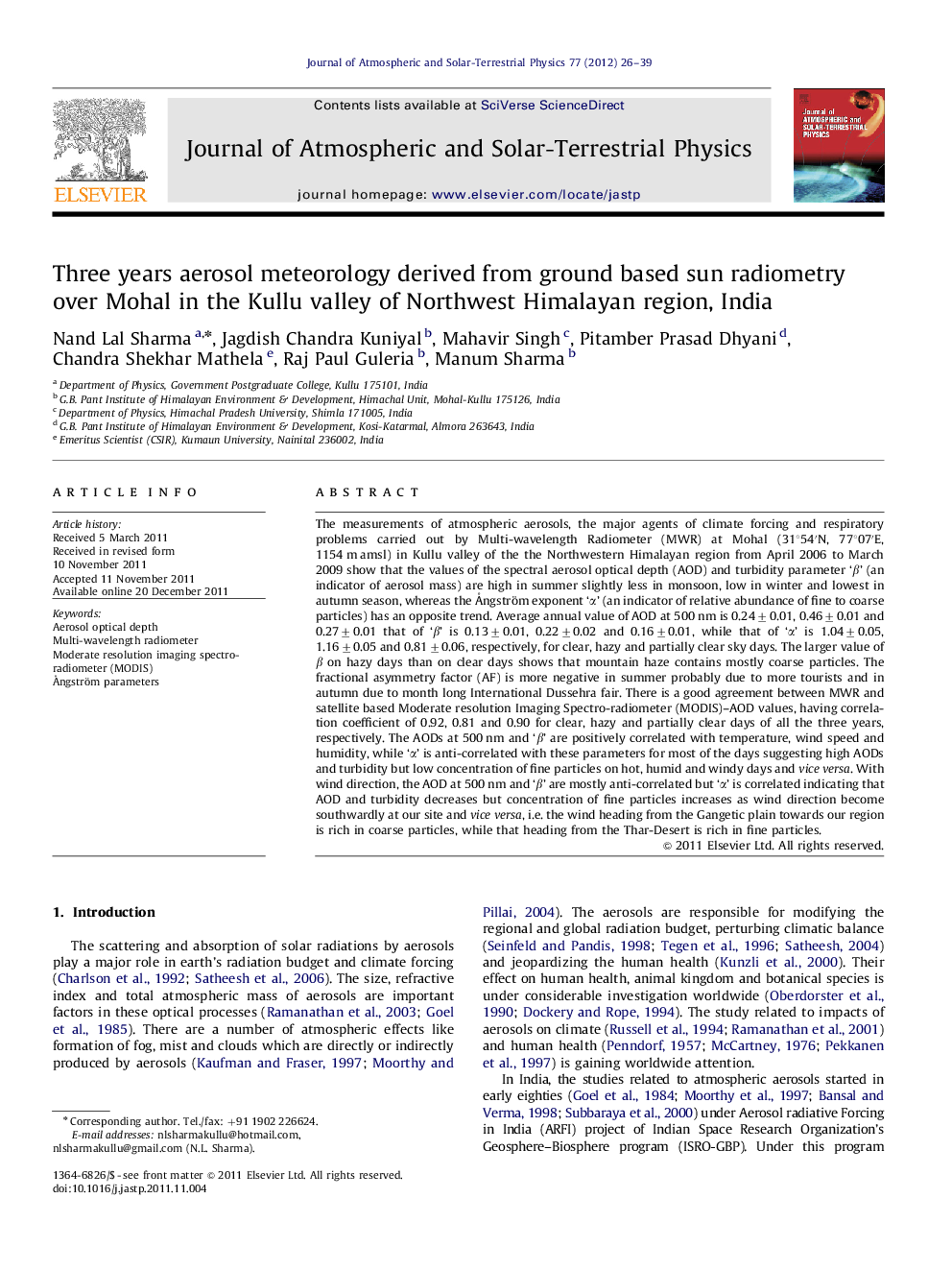| کد مقاله | کد نشریه | سال انتشار | مقاله انگلیسی | نسخه تمام متن |
|---|---|---|---|---|
| 1776979 | 1523653 | 2012 | 14 صفحه PDF | دانلود رایگان |

The measurements of atmospheric aerosols, the major agents of climate forcing and respiratory problems carried out by Multi-wavelength Radiometer (MWR) at Mohal (31°54′N, 77°07′E, 1154 m amsl) in Kullu valley of the the Northwestern Himalayan region from April 2006 to March 2009 show that the values of the spectral aerosol optical depth (AOD) and turbidity parameter ‘β’ (an indicator of aerosol mass) are high in summer slightly less in monsoon, low in winter and lowest in autumn season, whereas the Ångström exponent ‘α’ (an indicator of relative abundance of fine to coarse particles) has an opposite trend. Average annual value of AOD at 500 nm is 0.24±0.01, 0.46±0.01 and 0.27±0.01 that of ‘β’ is 0.13±0.01, 0.22±0.02 and 0.16±0.01, while that of ‘α’ is 1.04±0.05, 1.16±0.05 and 0.81±0.06, respectively, for clear, hazy and partially clear sky days. The larger value of β on hazy days than on clear days shows that mountain haze contains mostly coarse particles. The fractional asymmetry factor (AF) is more negative in summer probably due to more tourists and in autumn due to month long International Dussehra fair. There is a good agreement between MWR and satellite based Moderate resolution Imaging Spectro-radiometer (MODIS)–AOD values, having correlation coefficient of 0.92, 0.81 and 0.90 for clear, hazy and partially clear days of all the three years, respectively. The AODs at 500 nm and ‘β’ are positively correlated with temperature, wind speed and humidity, while ‘α’ is anti-correlated with these parameters for most of the days suggesting high AODs and turbidity but low concentration of fine particles on hot, humid and windy days and vice versa. With wind direction, the AOD at 500 nm and ‘β’ are mostly anti-correlated but ‘α’ is correlated indicating that AOD and turbidity decreases but concentration of fine particles increases as wind direction become southwardly at our site and vice versa, i.e. the wind heading from the Gangetic plain towards our region is rich in coarse particles, while that heading from the Thar-Desert is rich in fine particles.
► AOD and β are high in summer and monsoon, low in winter and lowest in autumn.
► Tourist and International Dussehra fair is cause of high negative asymmetry factor.
► There is a good agreement between MWR and satellite based (MODIS) AOD values.
► The AODs and β is high but α is low on hot, humid and windy days and vice versa.
► The wind from Gangetic plains is rich in coarse and from Thar in fine particles.
Journal: Journal of Atmospheric and Solar-Terrestrial Physics - Volume 77, March 2012, Pages 26–39